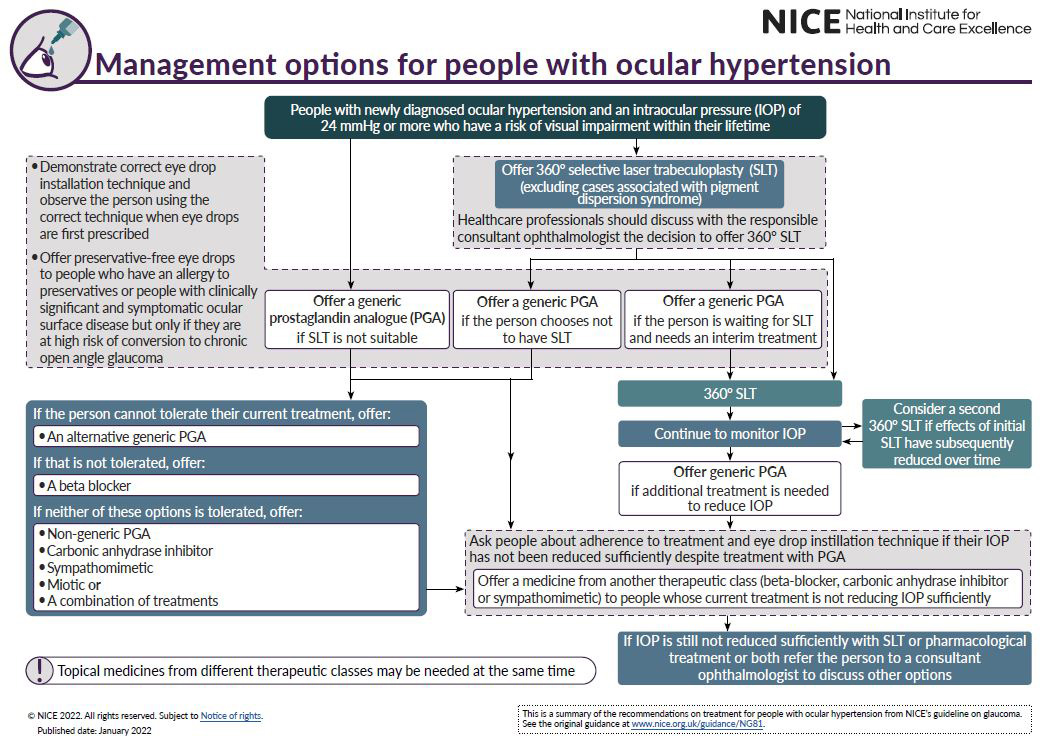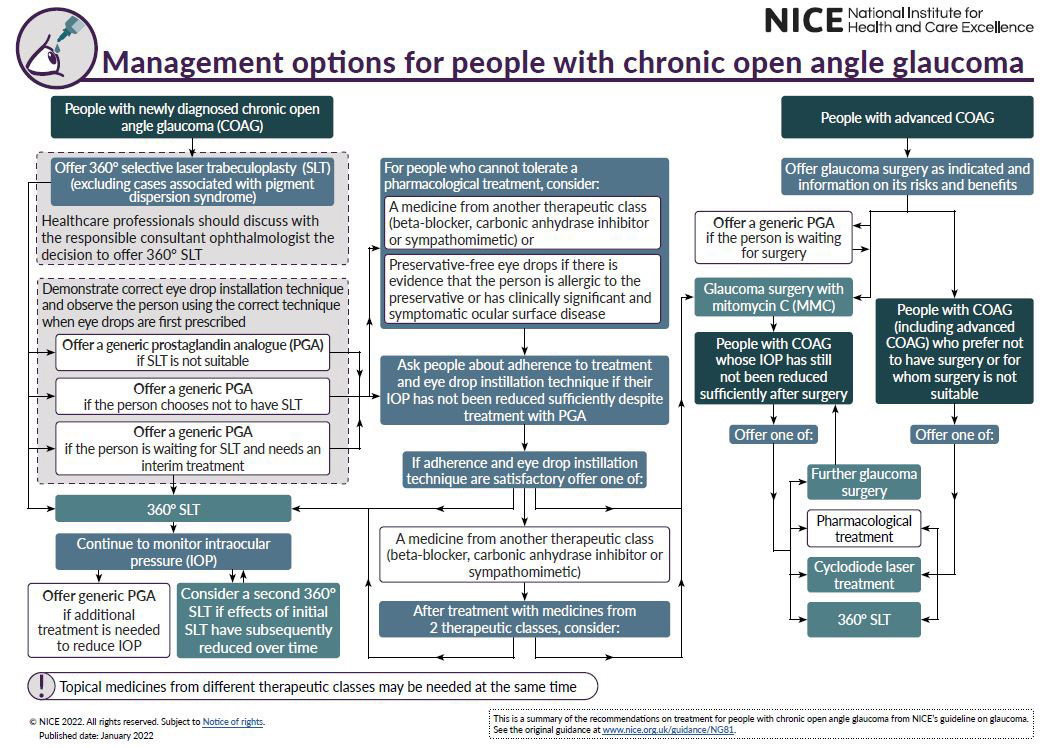Overview
This guideline covers diagnosing and managing glaucoma in people aged 18 and over. It includes recommendations on testing and referral (case-finding) for chronic open-angle glaucoma and ocular hypertension and on effective diagnosis, treatment and reassessment to stop these conditions progressing.
We have produced a large print version of this guideline, which is available to download in tools and resources.
Last reviewed: 26 March 2025
We added links to relevant technology appraisal guidance in the sections on ongoing treatment for people with OHT and ongoing treatment for people with COAG. This is to provide easy access to relevant guidance at the right point in the guideline only and is not a change in practice.
This guideline updates and replaces NICE guideline CG85 (April 2009) and NICE evidence summary ESNM56.
Next review: This guideline will be reviewed if there is new evidence that is likely to change the recommendations.
Recommendations
This guideline includes recommendations on:
- case-finding
- diagnosis
- standard practice for all assessments
- treatment
- reassessment
- organisation of care
- providing information
See the visual summaries on management options for people with ocular hypertension and management options for people with chronic open angle glaucoma.
Who is it for?
- Healthcare professionals
- Commissioners and providers of eye care services
- Adults with chronic open angle glaucoma or ocular hypertension, or who are at risk of developing glaucoma, their families and carers
Guideline development process
How we develop NICE guidelines
Your responsibility
The recommendations in this guideline represent the view of NICE, arrived at after careful consideration of the evidence available. When exercising their judgement, professionals and practitioners are expected to take this guideline fully into account, alongside the individual needs, preferences and values of their patients or the people using their service. It is not mandatory to apply the recommendations, and the guideline does not override the responsibility to make decisions appropriate to the circumstances of the individual, in consultation with them and their families and carers or guardian.
All problems (adverse events) related to a medicine or medical device used for treatment or in a procedure should be reported to the Medicines and Healthcare products Regulatory Agency using the Yellow Card Scheme.
Local commissioners and providers of healthcare have a responsibility to enable the guideline to be applied when individual professionals and people using services wish to use it. They should do so in the context of local and national priorities for funding and developing services, and in light of their duties to have due regard to the need to eliminate unlawful discrimination, to advance equality of opportunity and to reduce health inequalities. Nothing in this guideline should be interpreted in a way that would be inconsistent with complying with those duties.
Commissioners and providers have a responsibility to promote an environmentally sustainable health and care system and should assess and reduce the environmental impact of implementing NICE recommendations wherever possible.

